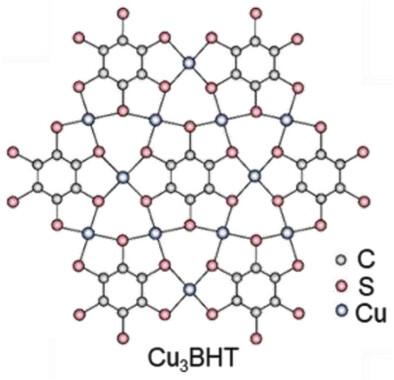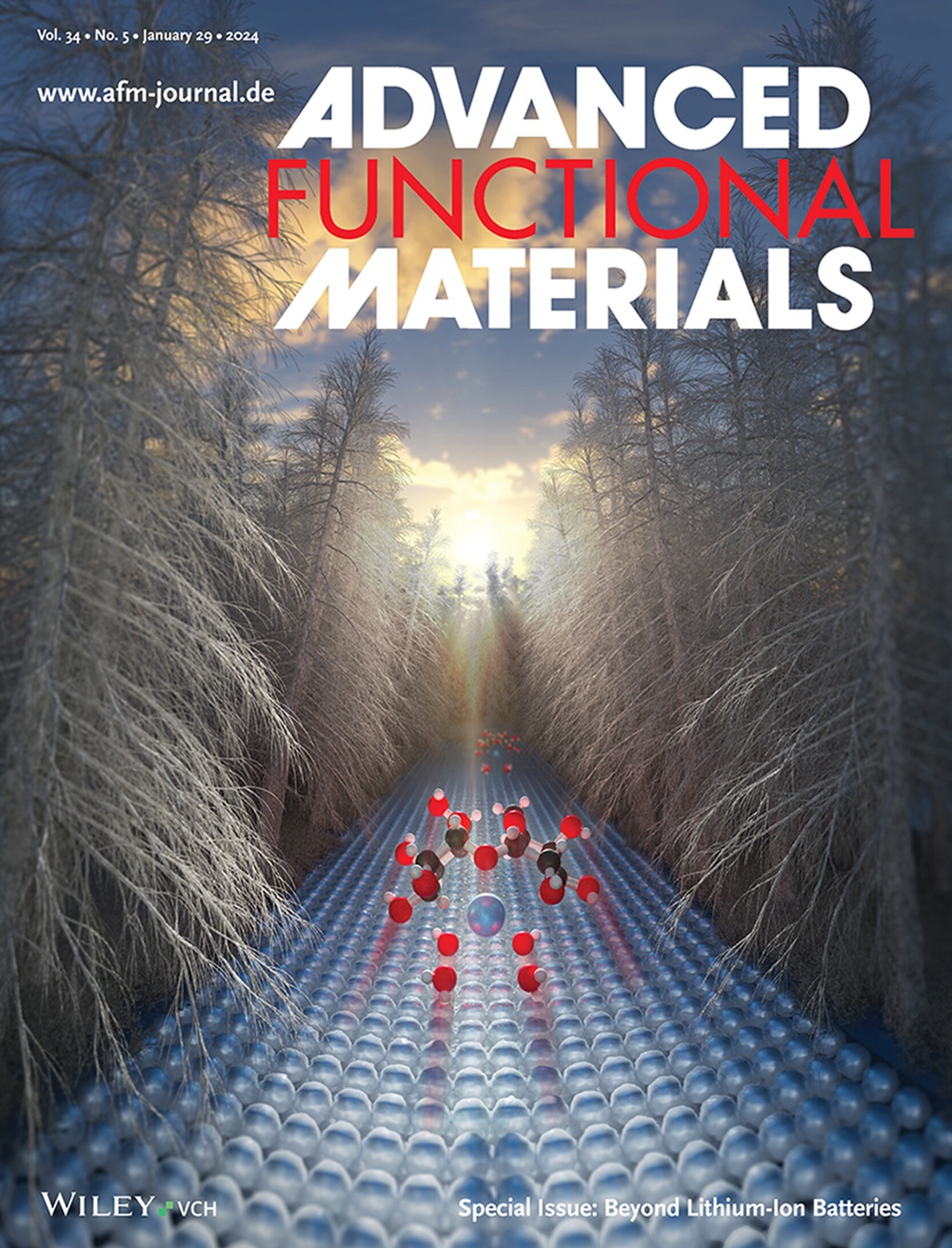Electrical Characterization of a Large-Area Single-Layer Cu3BHT 2D Conjugated Coordination Polymer
IF 18.5
1区 材料科学
Q1 CHEMISTRY, MULTIDISCIPLINARY
引用次数: 0
Abstract
Understanding charge transport properties of large-area single-layer 2D materials is crucial for the future development of novel optoelectronic devices. In this work, the synthesis and electrical characterization of large-area single-layers of Cu3BHT 2D conjugated coordination polymers are reported. The Cu3BHT are synthesized on the water surface by the Langmuir-Blodgett method and then transferred to SiO2/Si substrates with pre-patterned electrical contacts. Electrical measurements revealed ohmic responses across areas up to ≈1 cm2, with a mean resistance of approximately 53 ± 3 kΩ at a probe separation of 50 µm. Cooling and heating cycles show hysteresis in the electrical response, suggesting different current pathways are formed as the samples underwent structural-chemical changes during temperature sweeps. This hysteresis vanished after several cycles and the conductivity shows a stable exponential behavior as a function of temperature, suggesting that a temperature-dependent tunneling process is governing the conduction mechanism in the analyzed polycrystalline single-layer Cu3BHT samples. These results, together with density functional theory calculations and valence band X-ray photoelectron spectroscopy data suggest that the single-layer samples exhibit a semiconducting rather than a metallic behavior.

大面积单层 Cu3BHT 二维共轭配位聚合物的电学表征
了解大面积单层二维材料的电荷传输特性对于未来新型光电器件的开发至关重要。本研究报告了大面积单层 Cu3BHT 二维共轭配位聚合物的合成和电学特性。Cu3BHT 通过 Langmuir-Blodgett 方法在水面上合成,然后转移到带有预图案电触点的二氧化硅/硅衬底上。电学测量显示,在探针间距为 50 µm 的情况下,欧姆响应区域最大可达 ≈1 cm2,平均电阻约为 53 ± 3 kΩ。冷却和加热循环显示出电学响应的滞后性,这表明在温度扫描过程中,样品发生了结构-化学变化,形成了不同的电流通路。这种滞后现象在几次循环后消失了,电导率随温度的变化呈现稳定的指数行为,这表明在分析的多晶单层 Cu3BHT 样品中,与温度相关的隧道过程是传导机制的主导因素。这些结果以及密度泛函理论计算和价带 X 射线光电子能谱数据表明,单层样品表现出的是半导体行为而非金属行为。
本文章由计算机程序翻译,如有差异,请以英文原文为准。
求助全文
约1分钟内获得全文
求助全文
来源期刊

Advanced Functional Materials
工程技术-材料科学:综合
CiteScore
29.50
自引率
4.20%
发文量
2086
审稿时长
2.1 months
期刊介绍:
Firmly established as a top-tier materials science journal, Advanced Functional Materials reports breakthrough research in all aspects of materials science, including nanotechnology, chemistry, physics, and biology every week.
Advanced Functional Materials is known for its rapid and fair peer review, quality content, and high impact, making it the first choice of the international materials science community.
 求助内容:
求助内容: 应助结果提醒方式:
应助结果提醒方式:


